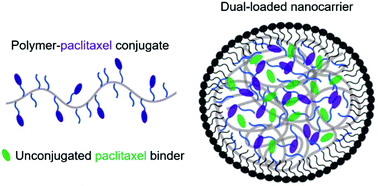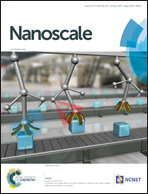Reinforcement of polymeric nanoassemblies for ultra-high drug loadings, modulation of stiffness and release kinetics, and sustained therapeutic efficacy†
Abstract
The optimization of current polymeric nanoparticle therapies is restricted by low drug loadings and limited tunability of core properties. To overcome these shortcomings, a novel self-association approach is utilized to fabricate a dual-loaded poly(1,2-glycerol carbonate)-graft-succinic acid-paclitaxel (PGC-PTX) conjugate nanoparticle (NP) in which the physical entrapment of free paclitaxel (PTX) affords unprecedented ultra-high drug loadings >100 wt%, modulation of mechanical stiffness, and tunable release kinetics. Despite high incorporation of free PTX (up to 50 wt%), the dual-loaded PGC-PTX nanocarriers (i.e., PGC-PTX + PTX NPs) exhibit controlled and sustained drug release over 15 days, without burst release effects. Importantly, optimization of drug/material efficiency concomitantly affords improved in vitro efficacy. In vivo, PGC-PTX + PTX NPs are safely administered at doses exceeding the median lethal dose of standard PTX, while a single high dose significantly extends survival relative to weekly PTX administrations in a murine model of peritoneal carcinomatosis.



 Please wait while we load your content...
Please wait while we load your content...
